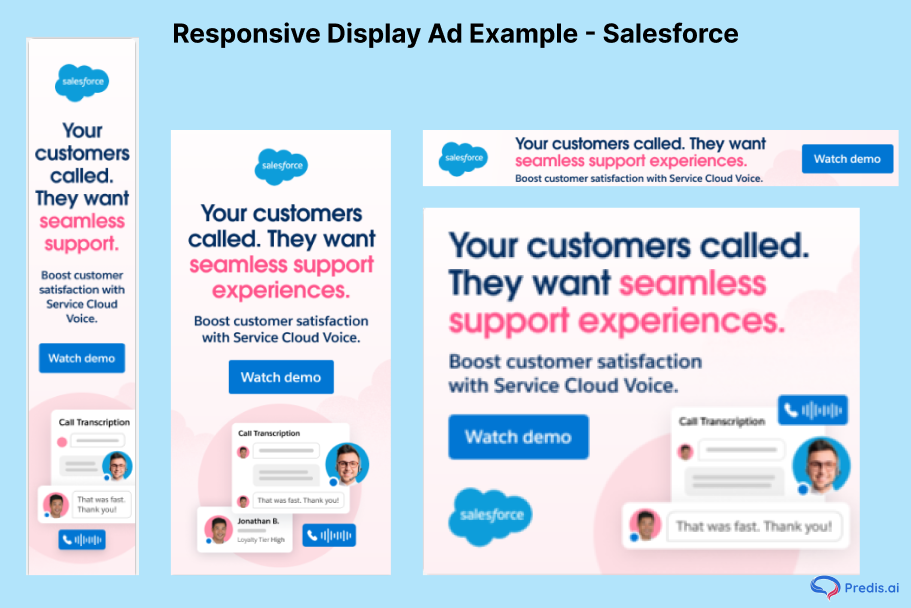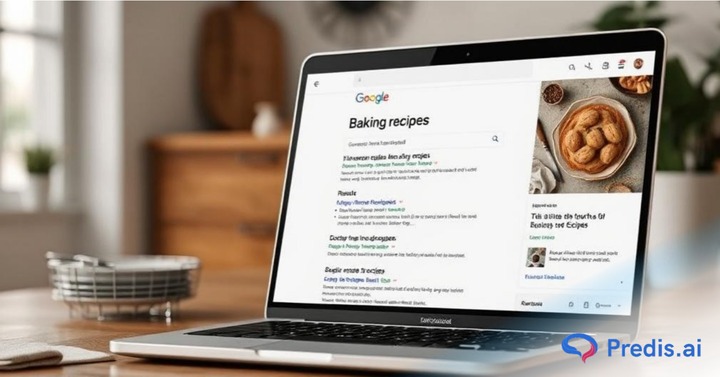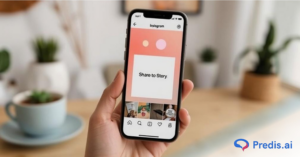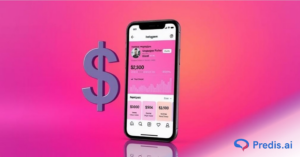You scroll through websites, bombarded by ads for everything from the latest fashion trends to that new car you just can’t afford. Yet, how often do you stop and pay attention to them?
You’re not alone. This phenomenon, known as “banner blindness,” plagues traditional display advertising. Users are bombarded with so many static ads that they subconsciously tune them out.
But fret no more! There’s a solution: a responsive display ad (RDA). These innovative ads are like chameleons, adapting their size, appearance, and format to seamlessly blend into any ad space on the Google Display Network (GDN). No more banner blindness blues – RDAs are designed to grab attention and get your message across!
Gartner’s latest report indicates that by 2024, responsive display ads are expected to account for 60% of digital display ad spending globally. This highlights the growing importance of RDAs to combat user inattention.
How RDA Works

Envision a single ad format that can seamlessly transform itself to fit any ad space, be it a banner on a website, a video ad on YouTube, or even a sponsored message within Gmail. That’s the core strength of RDAs.
Unlike static display ads, RDAs leverage machine learning to dynamically adjust their size, appearance, and content to perfectly match the available space. This ensures maximum visibility and impact across the vast GDN landscape.
Key Components of an RDA
A responsive display ad is an asset-based ad type, meaning their effectiveness hinges on the quality and creativity of the components you provide. These components act as the building blocks for Google AI to assemble the most impactful ad for each user and ad space. Let’s delve into the essential assets that make up a high-performing RDA:
- Headlines: These are the attention-grabbing titles that introduce your message. You can provide several headline variations within an RDA, allowing Google AI to select the most compelling one for each impression.
- Descriptions: These supporting statements further explain your offering and entice users to engage. Similar to headlines, RDAs allow you to provide multiple descriptions for optimal fit within different ad spaces.
- Eye-Catching Assets: High-quality visuals are crucial for capturing user attention. RDAs enable you to upload logos, images, and even short videos. Google AI then analyzes your assets and selects the one that best compliments your message and resonates with the target audience for each ad display.
A/B Testing by Google AI for Optimal Ad Combinations
You might be wondering how Google ensures the most effective combination of these elements is displayed for each impression. This is where the power of Google AI comes into play.
- The platform utilizes a sophisticated A/B testing methodology, leveraging historical performance data to understand which combinations of headlines, descriptions, and visuals have yielded the best results for similar audiences and ad spaces.
- During each ad impression, Google AI selects the element combination predicted to perform best for that specific user and ad format.
This continuous optimization process guarantees your RDAs are constantly learning and adapting for maximum effectiveness.
Benefits of Responsive Display Ad
Let’s explore seven key benefits that make RDAs a compelling choice for marketers:
1. Enhanced Brand Awareness and Recognition
Your brand message seamlessly adapts to various ad spaces, consistently presenting a cohesive visual identity. RDAs achieve this by allowing you to upload high-quality logos and images. This ensures your brand is consistently presented to potential customers, fostering brand recognition and building trust.
2. User-Centric Experience Through Targeted Delivery
Gone are the days of irrelevant ads disrupting the user experience. RDAs leverage Google’s AI capabilities to analyze user data and target ads precisely. This ensures your message reaches the right audience at the right time, fostering genuine engagement and positive user experiences.
3. Maximized Reach and Cost-Effectiveness
In today’s multi-device world, reaching your target audience requires adaptability. RDAs automatically adjust their size and format to fit any screen, be it a desktop, mobile device, or tablet. This ensures your ads reach a wider audience across various devices, potentially lowering your cost-per-acquisition (CPA) by maximizing visibility.
4. Conversion Optimization with Dynamic Content
RDAs empower you to showcase dynamic content tailored to specific user segments. This can involve showcasing relevant product feeds based on browsing history or presenting personalized messages that resonate with individual needs. Google’s algorithms even test different ad combinations to identify the most effective ones, further optimizing conversions.
5. The Power of Video Storytelling
The rise of video content consumption presents a significant opportunity for marketers. RDAs integrate seamlessly with video assets, allowing you to include up to five videos within your campaign. This opens doors for powerful storytelling, enhancing brand engagement and potentially leading to higher conversion rates.
Check out Predis.ai's e-commerce video maker to create captivating videos featuring your products!
6. Increased Efficiency and Time Savings
Managing numerous display ads for various sizes and formats can be time-consuming. RDAs streamline this process significantly. By providing a variety of headlines, descriptions, and visuals, you empower Google AI to create the optimal ad for each space. This frees up valuable time for strategizing and optimizing other aspects of your digital marketing efforts.
7. Improved Click-Through Rates (CTRs)
RDAs leverage the power of machine learning to constantly test and refine ad delivery. This ensures your message is presented in the most compelling way possible, maximizing click-through rates (CTRs). By showcasing the most relevant and visually appealing combinations to each user, RDAs encourage engagement and drive valuable website traffic.
A responsive display ad offers a comprehensive solution for modern display advertising. This type of advertisement’s adaptability, user-centric approach, and data-driven optimization make them a valuable tool for reaching your target audience, building brand awareness, and ultimately achieving your marketing goals.
Navigating the Ad Creation Process
Follow this guide to help you through the process of creating RDAs on Google Ads:
- Sign in to your Google Ads account.
- Navigate to “Display Campaigns” and click the “+” button.
- Choose your campaign goal and confirm the “Display campaign” type.
- Select your campaign subtype (standard display or Gmail).
- Add your website, name your campaign, and confirm location/language.
- Define your daily budget and name your ad group.
- Target your audience by demographics or browsing behavior.
- Upload up to 15 images, 5 logos, and (optional) 5 video ads.
- Create headlines, long headlines, descriptions, and business names (up to 5 each).
- Review the ad preview and launch your campaign.
Wrapping Up
Responsive display ads have revolutionized the way we reach audiences online. Their adaptability, data-driven optimization, and ability to showcase powerful visuals make them a cornerstone of any successful display advertising strategy. By following the steps outlined above and continuously refining your approach, you can leverage RDAs to achieve exceptional results.
Want to make your RDAs stand out from the crowd with visuals that captivate your target audience?
Predis.ai Advertisement Maker is here to help. Our user-friendly platform empowers you to create eye-catching visuals effortlessly. With AI-powered design suggestions that perfectly align with your brand identity and messaging, Predis.ai takes the guesswork out of crafting high-performing responsive display ads. Visit Predis.ai today and unlock the full potential of RDAs! Sign up for a free account to boost your sales today!















